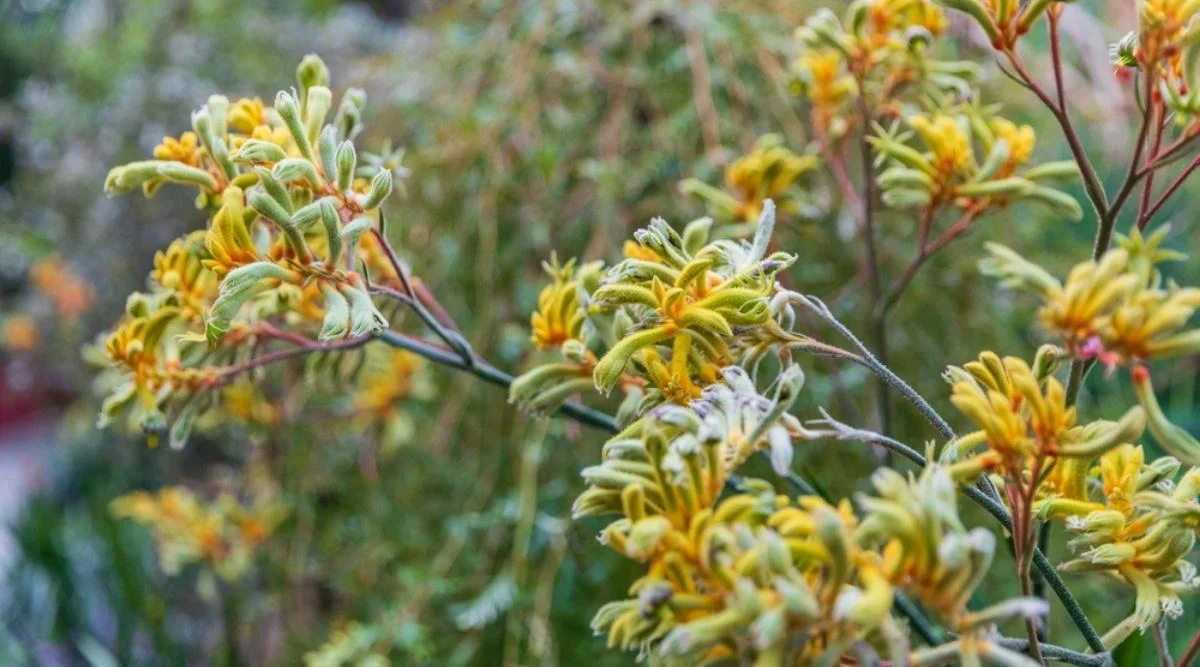masaharusato.com – Kangaroo Paw (Anigozanthos) is a striking, exotic plant native to Western Australia, known for its vibrant, tubular flowers that resemble the paws of a kangaroo. With their unusual shape, vivid colors, and resilience, Kangaroo Paw plants are an increasingly popular choice for gardens, particularly in dry, arid regions. These plants offer a unique beauty and provide an interesting focal point in both formal and informal garden settings.
Appearance and Characteristics
Kangaroo Paw flowers are truly distinctive, featuring tubular petals that resemble the shape of a kangaroo’s paw, which is where the plant gets its name. The flowers grow in clusters at the top of long, slender stems and are typically bright red, yellow, orange, or green, although some varieties also feature more unusual colors, including purple and black. The flowers themselves are furry, giving them a soft texture, and they bloom in late spring to summer, depending on the climate.
The foliage of the Kangaroo Paw plant is just as striking, with long, narrow, grass-like leaves that form dense clumps. These leaves are typically green, but in some varieties, they may have a bluish or silvery tint. The plant grows to a height of 2 to 6 feet, depending on the variety, and can spread to a similar width. The unique flowers, combined with the plant’s upright growth habit, create a dramatic vertical element in the landscape.
Growing Conditions
Native to the Australian outback, Kangaroo Paw plants are well-suited to dry, arid climates. They thrive in full sun and well-drained soil, making them perfect for xeriscaping or low-water gardens. While they are tolerant of heat and drought, they do require occasional watering during dry spells to maintain healthy growth and vibrant flowers.
Kangaroo Paw plants prefer sandy, loamy, or clay soils that are slightly acidic to neutral. They are also salt-tolerant, which makes them a good choice for coastal gardens or areas that experience high levels of salt in the soil. Good drainage is essential for Kangaroo Paw plants, as they do not tolerate waterlogged conditions. In areas with heavy rainfall or clay soils, planting in raised beds can help prevent water from accumulating around the roots.
Care and Maintenance
Kangaroo Paw is relatively easy to care for once established, but there are a few key things to keep in mind:
- Watering: While Kangaroo Paw is drought-tolerant, it will benefit from occasional deep watering, especially during long dry periods. Ensure the soil is well-drained to avoid root rot.
- Light: Kangaroo Paw plants thrive in full sun and need at least six hours of direct sunlight per day to flower well. They may tolerate partial shade, but the flowering may be reduced.
- Fertilizing: Kangaroo Paw plants are relatively low-feeding. Use a low-phosphorus fertilizer to encourage healthy growth. Over-fertilizing, especially with high-phosphorus fertilizers, can lead to poor flowering and root damage.
- Pruning: Regular pruning is essential to maintain the plant’s shape and encourage better flowering. Deadhead spent flowers to prevent them from going to seed and to stimulate more blooms. Cut back any damaged or dead foliage to promote fresh growth.
- Pests and Diseases: While generally pest-resistant, Kangaroo Paw can sometimes be affected by fungal diseases, particularly if they are watered improperly. Ensure good air circulation around the plant and avoid overhead watering. Insect pests, such as aphids and scale, may also occasionally infest the plant, so keep an eye out for these and treat them as needed.
Attracting Pollinators
Kangaroo Paw plants are excellent for attracting a variety of pollinators. Their unique, brightly colored flowers are particularly attractive to birds, especially nectar-feeding species such as honey eaters. They also attract bees and butterflies, making them an excellent choice for pollinator-friendly gardens. The flowers provide a valuable source of nectar, supporting local ecosystems and enhancing biodiversity.
Kangaroo Paw in the Landscape
Kangaroo Paw plants are versatile and can be used in various landscaping designs. Their vibrant flowers and upright growth make them ideal for adding a splash of color to garden borders, xeriscapes, and wildflower gardens. They also make excellent focal points in garden beds, particularly when planted in groups for maximum visual impact.
These plants work particularly well in native or Australian-themed gardens, where their bold flowers can be paired with other drought-tolerant, low-maintenance plants. Additionally, Kangaroo Paw plants make striking container specimens, either as standalone plants or combined with other plants in pots. Their architectural form and colorful flowers also make them perfect for cut flower arrangements.
Conclusion
Kangaroo Paw is a stunning and resilient plant that can add both beauty and interest to any garden. With its vibrant, kangaroo paw-shaped flowers and attractive foliage, this Australian native is a standout in both formal and naturalistic garden settings. Its tolerance for heat and drought, coupled with its ability to attract pollinators, makes it an excellent choice for sustainable gardens in dry climates. Whether used in the landscape or as a container plant, Kangaroo Paw will continue to impress with its striking beauty and unique charm.
